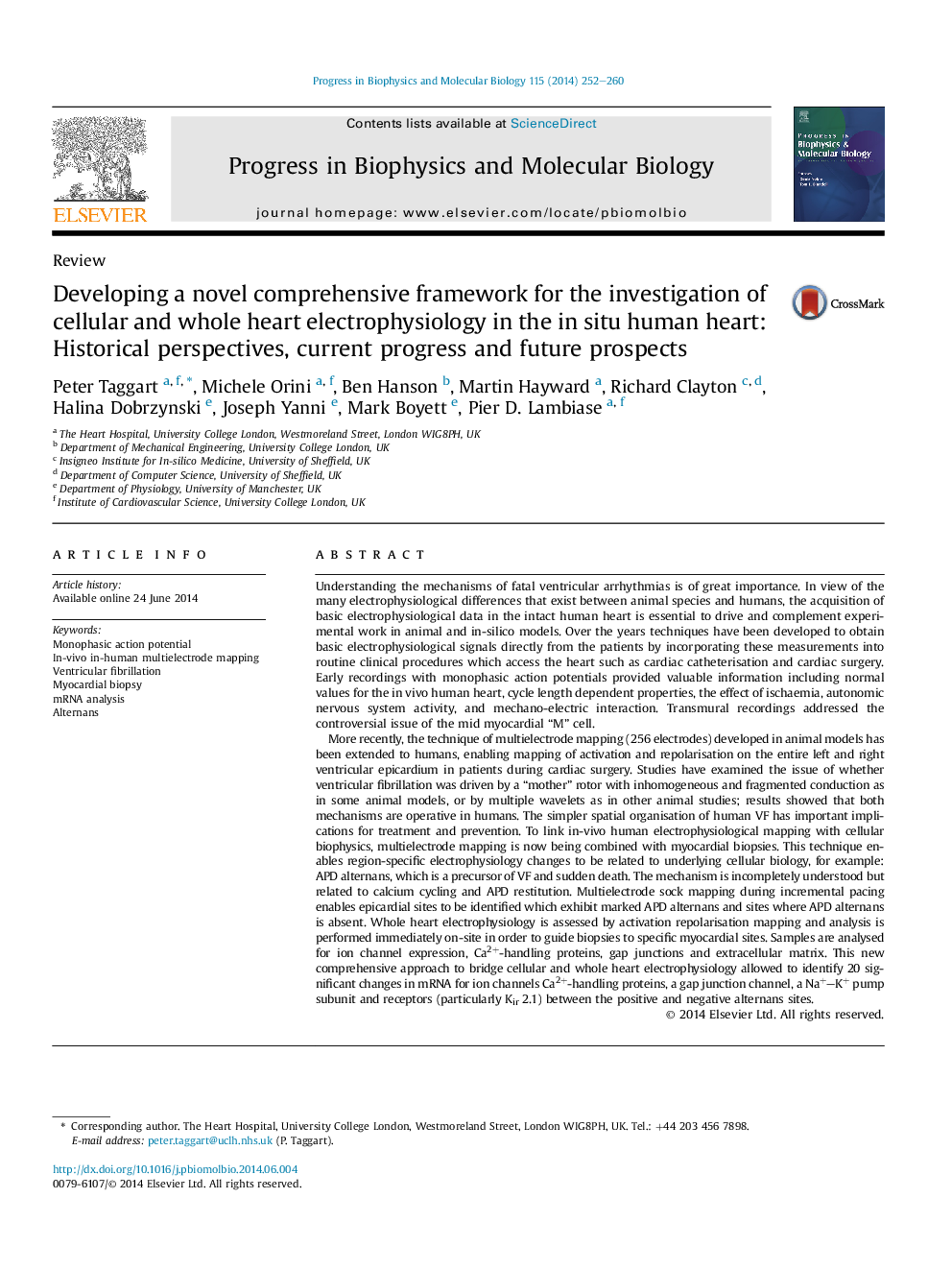| Article ID | Journal | Published Year | Pages | File Type |
|---|---|---|---|---|
| 8401246 | Progress in Biophysics and Molecular Biology | 2014 | 9 Pages |
Abstract
More recently, the technique of multielectrode mapping (256 electrodes) developed in animal models has been extended to humans, enabling mapping of activation and repolarisation on the entire left and right ventricular epicardium in patients during cardiac surgery. Studies have examined the issue of whether ventricular fibrillation was driven by a “mother” rotor with inhomogeneous and fragmented conduction as in some animal models, or by multiple wavelets as in other animal studies; results showed that both mechanisms are operative in humans. The simpler spatial organisation of human VF has important implications for treatment and prevention. To link in-vivo human electrophysiological mapping with cellular biophysics, multielectrode mapping is now being combined with myocardial biopsies. This technique enables region-specific electrophysiology changes to be related to underlying cellular biology, for example: APD alternans, which is a precursor of VF and sudden death. The mechanism is incompletely understood but related to calcium cycling and APD restitution. Multielectrode sock mapping during incremental pacing enables epicardial sites to be identified which exhibit marked APD alternans and sites where APD alternans is absent. Whole heart electrophysiology is assessed by activation repolarisation mapping and analysis is performed immediately on-site in order to guide biopsies to specific myocardial sites. Samples are analysed for ion channel expression, Ca2+-handling proteins, gap junctions and extracellular matrix. This new comprehensive approach to bridge cellular and whole heart electrophysiology allowed to identify 20 significant changes in mRNA for ion channels Ca2+-handling proteins, a gap junction channel, a Na+-K+ pump subunit and receptors (particularly Kir 2.1) between the positive and negative alternans sites.
Related Topics
Life Sciences
Biochemistry, Genetics and Molecular Biology
Biophysics
Authors
Peter Taggart, Michele Orini, Ben Hanson, Martin Hayward, Richard Clayton, Halina Dobrzynski, Joseph Yanni, Mark Boyett, Pier D. Lambiase,
